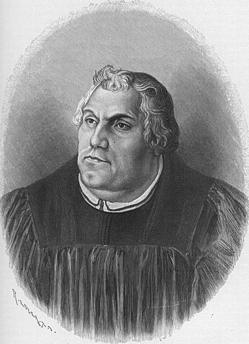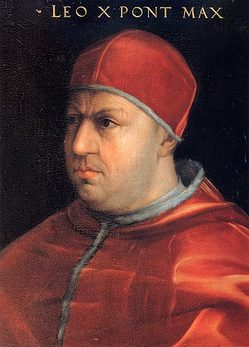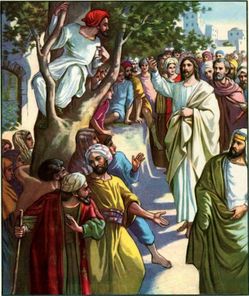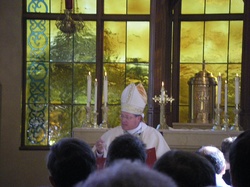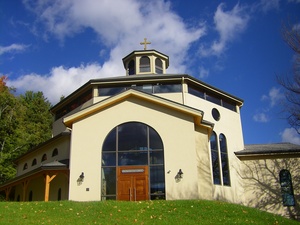2010 is the 10th anniversary of the Liturgical Institute at Mundelein Seminary. Congrats to Father Douglas Martis, Denis McNamara and Kevin Thornton for the hard work of making the LI a place of prayer, study and research/publication.
Category: Sacred Liturgy & Sacraments
Serratelli updates US Bishops on the translation of the new Roman Missal
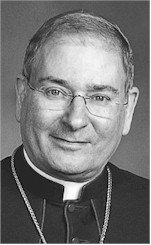 The out-going chairman of the bishops’ Committee on Divine Worship, Bishop Arthur Serratelli of Paterson, gave the following update to the USCCB today. Bishop Serratelli is now succeeded by the Archbishop of New Orleans, the Most Reverend Gregory M. Aymond. The USCCB press release is here.
The out-going chairman of the bishops’ Committee on Divine Worship, Bishop Arthur Serratelli of Paterson, gave the following update to the USCCB today. Bishop Serratelli is now succeeded by the Archbishop of New Orleans, the Most Reverend Gregory M. Aymond. The USCCB press release is here.
surfaced through some segments of the Catholic Press regarding the present
state of the text of the Roman Missal, Third Edition. A number of facts will
hopefully clarify the situation and, in so doing, give us the calm needed to
welcome and implement the new text.
genesis of the final text that is now being prepared for publication. The International
Commission on English in the Liturgy (ICEL) prepared for the English-speaking
Conferences of Bishops preliminary drafts (“green books”) of the 12 sections of
the Roman Missal. After incorporating the feedback and responses of the
individual Conferences of Bishops and the Vatican Congregation for Divine
Worship and the Discipline of the Sacraments, ICEL then prepared the final
drafts (“gray books”). These were approved by canonical vote by each of the
member Conferences. In approving the gray books, each conference also had the
opportunity to make further suggestions to the Congregation, as was done in
particular by our Conference. We submitted many amendments to the texts. The
Congregation, working with the Vox Clara Committee, carefully listened to what
the bishops said. The Congregation incorporated many of the suggestions of the
various Conferences (including our own), combined with their own review and
changes, and put forth the final text. The Congregation followed the principles
of Liturgiam Authenticam faithfully but not slavishly.
now being readied for publication. This process includes a final review and
copy edit which, given the size of the text, uncovers some minor questions of
consistency, typographical errors, and layout. Those questions are being
addressed by the Congregation for Divine Worship. This review has not dealt
with the translation itself. The critique that has circulated has necessarily
failed to take into account the final version of the text, which incorporates
some corrections issued by the Congregation since the transmittal of the full
text to the English-speaking Conferences of Bishops in August 2010.
there is a final text. It has received a recognitio. As the work of editing and
assembling nears completion, there is assurance that the published text will be
available in more than ample time for implementation in Advent 2011. It is good
to note also that the catechetical preparation for implementation is already
underway and has proceeded with much enthusiasm and wide acceptance by both
clergy and laity. It is clear at this point in time that there is an attitude
of openness and readiness to receive the new text. Let us pray in this time of
transition and change that the Roman Missal, Third Edition, will enable all to
understand more deeply the mysteries we celebrate.
Dedication of the Basilica of Saint John Lateran
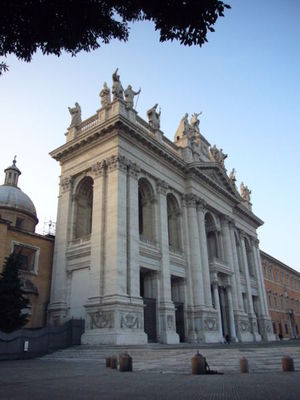 Jerusalem, city of God, you will shine with the light of God’s splendor; all people on earth will pay you homage. Nations will come from afar, bearing gifts for the King of Heaven; in you they will worship the Lord. (the lamp-lighting antiphon from the Dedication of a Church)
Jerusalem, city of God, you will shine with the light of God’s splendor; all people on earth will pay you homage. Nations will come from afar, bearing gifts for the King of Heaven; in you they will worship the Lord. (the lamp-lighting antiphon from the Dedication of a Church)
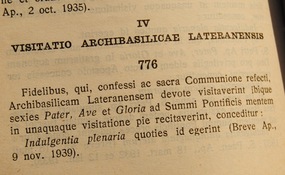 Pope Benedict said it well in his 2008 Angelus Address for this feast: “Dear Friends, today’s feast celebrates a mystery that is always relevant: God’s desire to build a spiritual temple in the world, a community that worships him in spirit and truth (cf. John 4:23-4). But this observance also reminds us of the importance of the material buildings in which the community gathers to celebrate the praises of God. Every community therefore has the duty to take special care of its own sacred buildings, which are a precious religious and historical patrimony. For this call upon the intercession of Mary Most Holy, that she help us to become, like her, the ‘house of God,’ living temple of love.”
Pope Benedict said it well in his 2008 Angelus Address for this feast: “Dear Friends, today’s feast celebrates a mystery that is always relevant: God’s desire to build a spiritual temple in the world, a community that worships him in spirit and truth (cf. John 4:23-4). But this observance also reminds us of the importance of the material buildings in which the community gathers to celebrate the praises of God. Every community therefore has the duty to take special care of its own sacred buildings, which are a precious religious and historical patrimony. For this call upon the intercession of Mary Most Holy, that she help us to become, like her, the ‘house of God,’ living temple of love.”Give rest, O Christ to your servants
Forgiven by the grace of Christ, a homily for All Saints & All Souls in light of indulgences and the Reformation
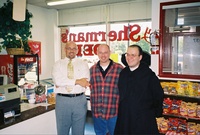
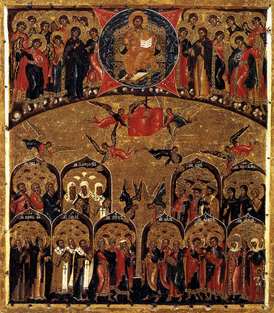
After earth’s Exile, I hope to go and enjoy You in the Fatherland, but I do not want to lay up merits for heaven. I want to work for Your Love alone with the one purpose of pleasing You, consoling Your Sacred Heart, and saving souls who will love You eternally.In the evening of this life, I shall appear before You with empty hands, for I do not ask You, Lord, to count my works. All our justice is stained in Your eyes. I wish, then, to be clothed in Your own Justice and to receive from Your Love the eternal possession of Yourself. I want no other Throne, no other Crown but You, my Beloved!
I never approved of a schism, nor will I approve of it for all eternity…. That the Roman Church is more honored by God than all others is not to be doubted. St. Peter and St. Paul, forty-six Popes, some hundreds of thousands of martyrs, have laid down their lives in its communion, having overcome Hell and the world; so that the eyes of God rest on the Roman Church with special favor. Though nowadays everything is in a wretched state, it is no ground for separating from the Church. On the contrary, the worse things are going, the more should we hold close to her, for it is not by separating from the Church that we can make her better. We must not separate from God on account of any work of the devil, nor cease to have fellowship with the children of God who are still abiding in the pale of Rome on account of the multitude of the ungodly. There is no sin, no amount of evil, which should be permitted to dissolve the bond of charity or break the bond of unity of the body. For love can do all things, and nothing is difficult to those who are united (Martin Luther to Pope Leo X, January 6, 1519).
Truer words were never spoken! How unspeakably sad that Luther finally decided not to send this letter to the Pope. How differently things might have turned out if Luther had sent it, and if the German princes had not gotten involved!
When man seeks God, then is truly free… Pope recalls the teaching of Roman Guardini
H2O News has a short video clip on the Guardini Foundation meeting with the Pope.
Spouses are to help each other follow a path of sanctity, Pope Benedict teaches
 On Wednesday, October 27, Pope Benedict XVI noted that in
On Wednesday, October 27, Pope Benedict XVI noted that in
the Great Jubilee of the Year 2000, the Venerable Servant of God John Paul II
proclaimed Saint Bridget of Sweden (1303-1373), co-patroness of the whole of
Europe. It’s the hope of all of us, as Benedict indicated, that Saint Bridget
“…can intercede effectively before God, to obtain the much-awaited grace of the
full unity of all Christians. We want to pray … for this same intention, which
we consider so important, so that Europe will be able to be nourished from its
own Christian roots, invoking the powerful intercession of St. Bridget of
Sweden, faithful disciple of God, co-patroness of Europe.”
Pope noted something that I think is quite interesting, perhaps quite bold to
say, even if it is the teaching of the Church, that married couples are to help
each other get to heaven: “to advance in the Christian life.” Our Catholic
teaching on marriage is that man and woman are to form a “conjugal
spirituality” that is “follow a path of sanctity.” The two pertinent paragraphs
of a longer address are here:
religious who initiated her in the study of the Scriptures, exercised a very
positive influence on her own family that, thanks to her presence, became a
true “domestic church.” Together with her husband, she adopted the
Rule of the Franciscan Tertiaries. She practiced works of charity towards the
indigent with generosity; she also founded a hospital. Together with his wife,
Ulf learned to improve his character and to advance in the Christian life. On
returning from a long pilgrimage to Santiago de Compostela, taken in 1341 with
other members of the family, the spouses matured the plan to live in
continence, but shortly after, in the peace of a monastery to which he had
retired, Ulf concluded his earthly life.
helps us to appreciate what today we could define an authentic “conjugal
spirituality”: Together, Christian spouses can follow a path of sanctity,
supported by the grace of the sacrament of Marriage. Not infrequently, as
happened in the lives of St. Bridget and Ulf, it is the wife who with her
religious sensibility, with delicacy and gentleness, is able to make the
husband follow a path of faith. I am thinking, with recognition, of so many
women who, day in day out, still today illumine their families with their
testimony of Christian life. May the Spirit of the Lord fuel the sanctity of
Christian spouses, to show the world the beauty of marriage lived according to
the values of the Gospel: love, tenderness, mutual help, fecundity in
generating and educating children, openness and solidarity to the world,
participation in the life of the Church.”
Praying for the dead, All Souls
27 Holy Apostles Seminarians take steps toward priesthood
Jesus says to his disciples, ask the Lord to send workers into his harvest (MT 9:38).
The Cross of Christ prepares us for the final judgment
 Autumn is upon us with its mix of weather: recent days
Autumn is upon us with its mix of weather: recent days
there’s been warmth and coolness, rain, clouds and sun. The earth is adjusting and so are we, at least liturgically. Judging by the liturgical calendar of the Catholic Church we are
near the end of the liturgical year with the First Sunday of Advent only a few weeks away. Some churches, like the Maronites in
particular, mark this time of the liturgical year by counting weeks after the
Exaltation of the Cross in a time called the Season of the Cross. This particular season of the Maronite liturgical calendar prepares us to account for our lives by looking to our personal final victory through prayer, fasting, waiting, and conversion of life. The rich liturgical theology of the Maronite Church ought to draw us more closely to the glory of the Lord’s right side in an attitude of gratitude for all things in life.
Jesus’ Cross as “the Cross of Light,” the symbol -the reality– par excellence of
the victorious Son of Man and Son of God. The cross of is that primary sign by
which Jesus Christ, Our Lord, becomes for us the victor over death and opens
the gates of heaven for our entrance into blessedness with God the Father, God the Son and God the Holy Spirit.
prayed today: When you shall appear on the last day the sign of the cross shall
shine brighter than the sun, enable us, your worshipers, to enter your kingdom
of light, and glorify and thank you, O Christ, with your father, and your Holy
Spirit, now and forever.


